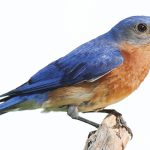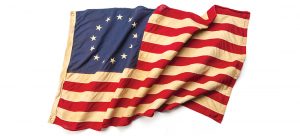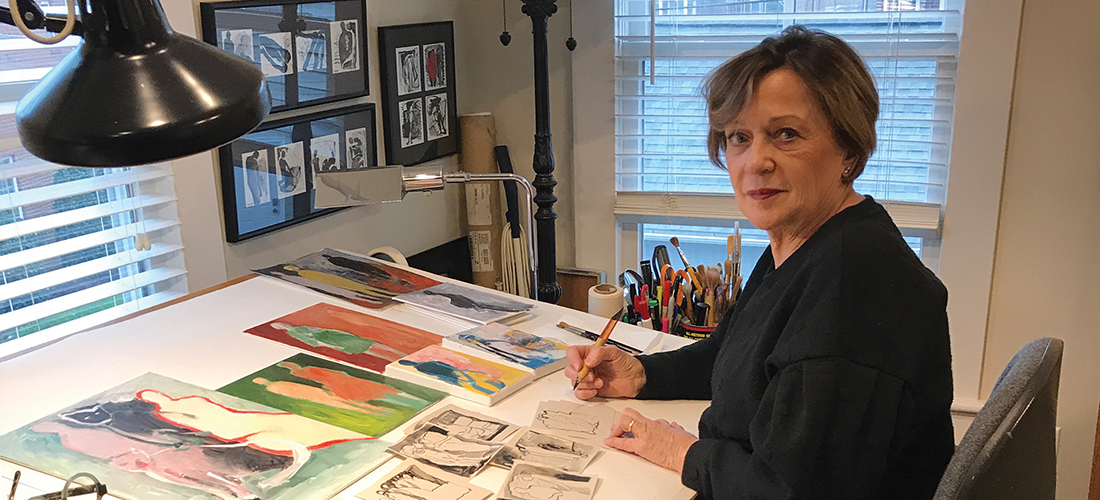
Agnes Preston-Brame’s take on Abstract Expressionism
By Nancy Oakley
“I’m reinventing myself, as I always say,” Agnes Preston-Brame chuckles from her perch on her living room sofa, which just so happens to be upholstered in an elegant fleur-de-lys pattern that she designed. Behind her hang two large paintings, one of a group of faceless figures swathed in broad strokes of blue and green paint, another of a single ghostlike figure, entirely in white, save for a red splotch where its heart might be. “Well, I had breast cancer on that side. Because of that, it will never be sold,” Agnes allows, with just a trace of her native Hungarian accenting her words.
The two canvases are among several adorning the walls of the Southside Greensboro home that the prolific painter and self-described Abstract Expressionist shares with her husband, Gary Brame. In an earlier painting, two white, feathery figures spring in opposite directions from a blue-gray background, as if rising from an ocean’s depth to its surface. “It’s called Separating,” Agnes says, explaining that at one point she held a fascination for trees, the inspiration for the unusually elongated lines of the human forms.
She has always been attracted to figures, since her childhood in Budapest, Hungary, when, “I started doodling, like most kids.” For an only child of divorced parents, art was an escape. Agnes also recalls a talented classmate from that period: “She was always drawing models. I admired her doing it. I think maybe she poked something in me early, because I always went right to figures.” In time, Agnes would attend the Desi Huber School of Art and later the Academy of Fine Art (no mean feat, as husband Gary points out: “It was the Soviet system; you did not get into an advanced school unless you were a straight-A student.”)
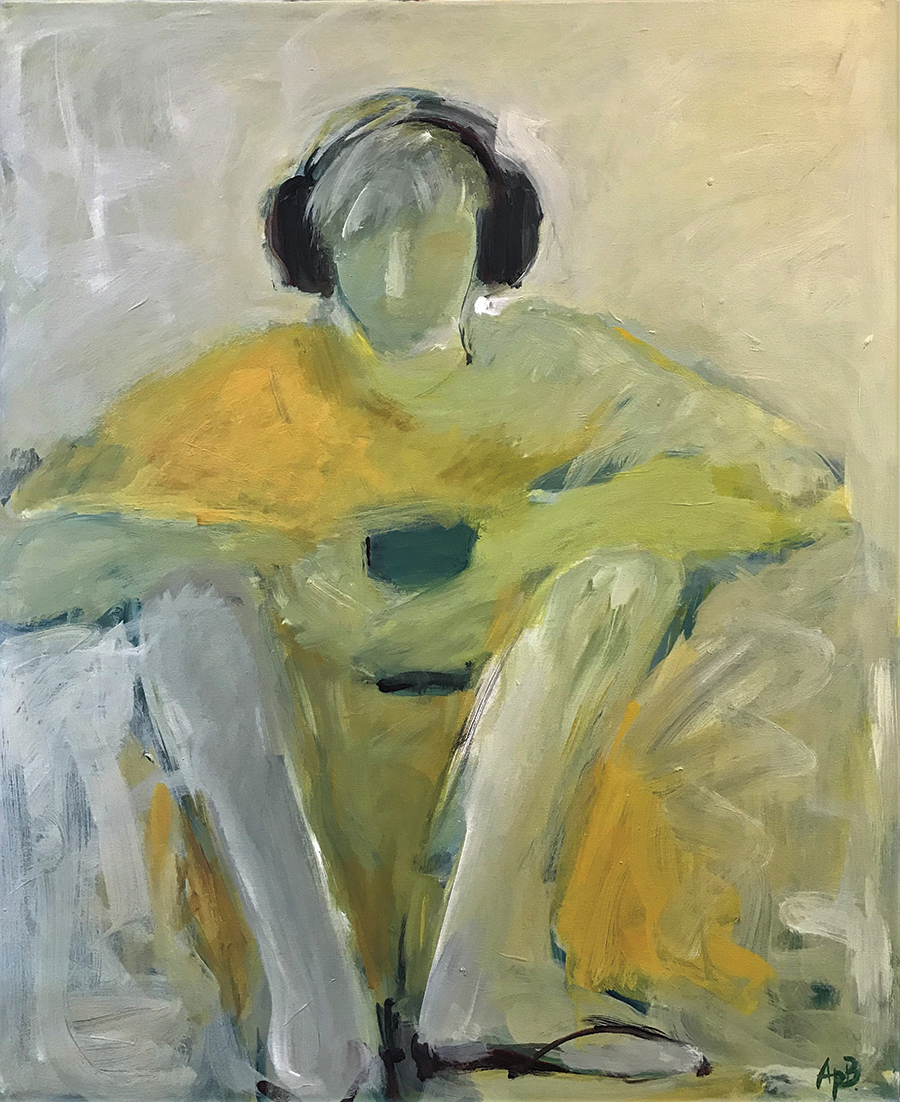
But the curriculum was rigid. “You start out in art school doing shapes, you know, balls and squares and then you get into the figure from models, for portraits,” Agnes recalls. She didn’t realize just how stifling her education was until she was allowed to visit her mother, who had remarried and escaped Hungary’s revolution in 1956, and had become an American citizen. After several appeals to Hungarian authorities, Agnes, then 19, was at last granted a passport and flew to Montreal, where her mother was then living. It was to be a three-month visit.
Or so the young artist thought. “My mom, obviously, insisted that I stay and wanted me to stay. But she did a very tricky thing.” She drove the impressionable teenager down to New York City and took her to all the museums and all the galleries. “I was blown away by the different styles — Expressionism and Abstract Expressionism — that we were censored from in Hungary.” The ruse worked, as Agnes realized, “I probably couldn’t have achieved what I really wanted to achieve to become a professional artist, because it was still very difficult under communism, under Russians.”
She defected, much to her father’s ire. Years later, after his death and the fall of communism, Agnes and Gary traveled to her father’s flat in Budapest, which they’d inherited. There, hidden in the back of what Gary describes as a “primitive storage unit,” was a box of sketches. “Wonderful little sketches of her grandfather,” Gary remembers. “They were not childish in any way. Very professional.”
But for Agnes, a truly professional artist’s path would take many twists and turns. Because of her mother’s status as an American citizen, Agnes, who spoke no English, had to live in America, not Montreal. So her mother deposited her daughter at the YWCA in New York, and appealed to some wealthy restaurateur friends to secure for her daughter a hat-checking job. Agnes had created a portfolio while living with her mother in Canada, but the language barrier foiled her chances of attending Cooper Union, as she had hoped. She enrolled in the prestigious Art Student’s League of New York, whose alums include the likes of Thomas Eakins, Jackson Pollock, Alexander Caldwell, Helen Frankenthaler, Willem de Kooning and others in recent years, including Chinese dissident Ai Weiwei. Though the institution offered instruction without academic credit, Agnes benefited from the tutelage of Modernist painter Vaclav Vytlacil, who preached the gospel of Hans Hoffmann, which is to say Abstract Expressionism, the style that had so captivated her.
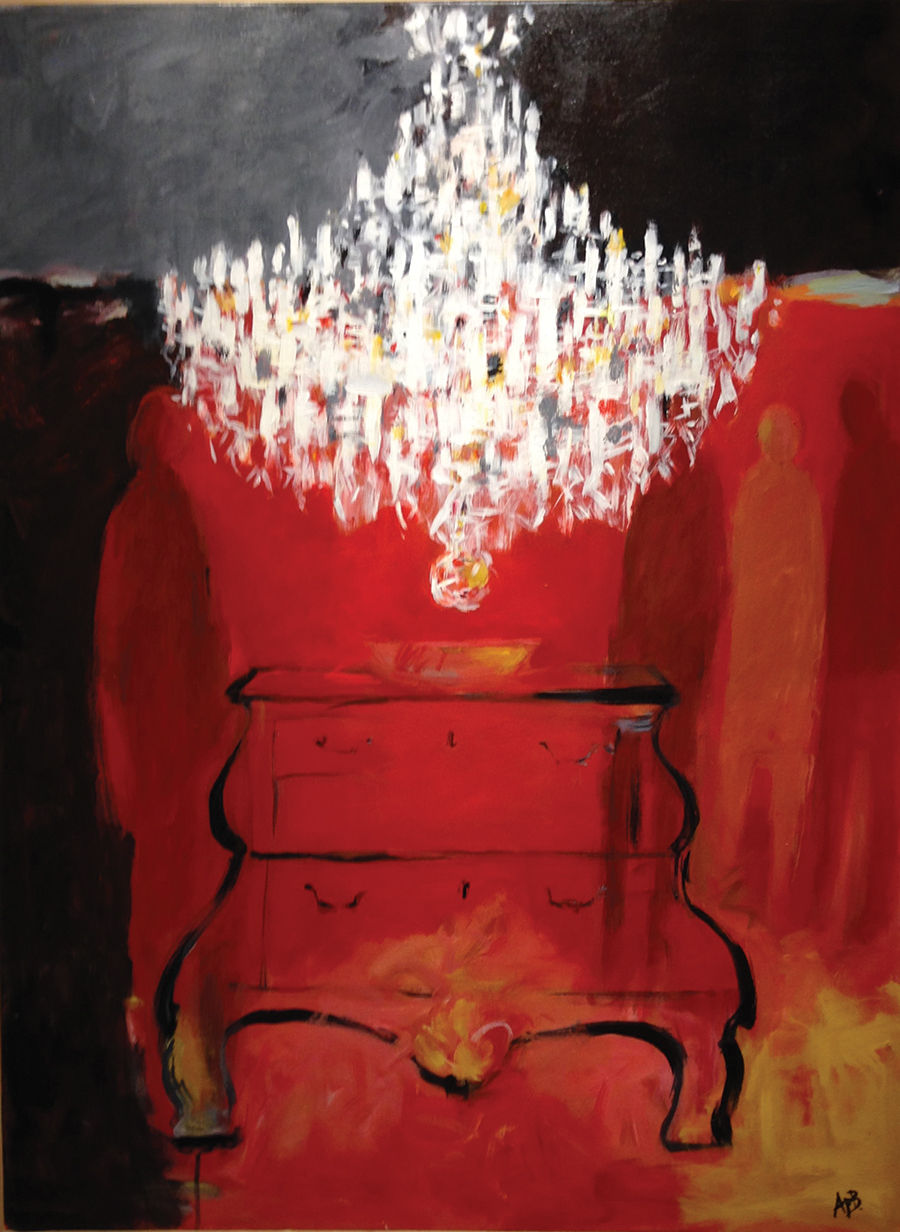
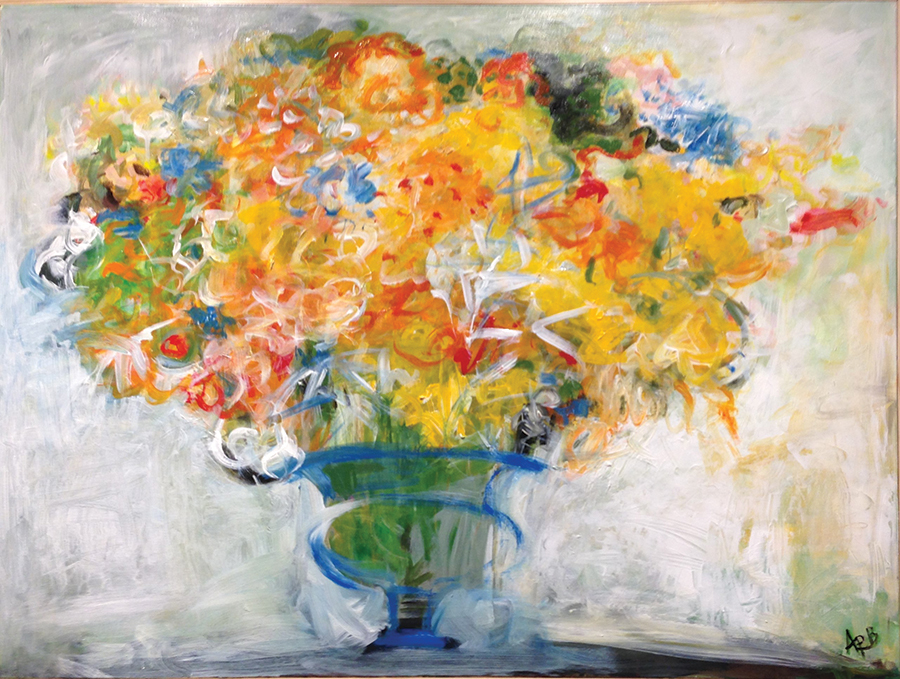
But she never abandoned her love of painting figures and ultimately blended the two passions, a signature style that underpin her work today: fluid, faceless figures whose poses or gestures convey multiple possible meanings. “To me, the body expresses a tremendous amount,” says Agnes. In a recent painting titled In Another World, a seated figure in a bright yellow background wears a pair of headphones while staring at a hazy object, presumably an iPhone. Is he or she engaged? Bored? It’s up to the viewer to decide. In another called Wish You Hadn’t Told Me, a seated woman carries herself in such a way as to appear concerned, while another woman — the messenger implied in the painting’s title — walks away in the background. Has she delivered devastating news? Or merely conveyed something annoying and trivial? Again, it depends on the viewer’s imagination. “I often call my work ‘situational,’ because they are stories,” Agnes explains.
She continued her studies, thanks to a scholarship to the League’s summer campus in Woodstock, New York, where again, she flourished under the instruction of mentors like Arnold Blanch and painter Philip Guston, and garnered yet another — and full — scholarship to New York University at New Paltz. Here, she obtained a fine arts degree, graduating summa cum laude, and met her first husband, Steve Preston. “My maiden name, nobody could pronounce. So I was happy when I married my first husband because his last name was easy enough to pronounce!” Agnes jokes.
But his fellowship at Columbia University landed the couple back in New York City — where Agnes’ fine arts degree held little, if any cachet among prospective employers. “They were like, ‘You don’t know how to type,’” Agnes recalls. She had to reinvent herself again.
After seeing an advertisement for a textile designer at a Broadway address, Agnes armed herself with her portfolio and went to apply. She discovered that the entire building was filled entirely with textile companies. “So, I decided, ‘to heck with the one I looked up.’ So I went up to the 24th floor and started. And on the second floor they hired me,” Agnes says with a laugh. It marked the beginning of her career as a textile designer.
As a trainee, she learned the trade from the ground up, visiting various mills and learning the entire fabrication process. In less than two years, Agnes left the job to her own business designing for high-end companies, such as Brunschwig & Fils, Schumacher, among others — including the one that employed Gary Brame. He and Agnes met almost immediately after his arrival in New York in the mid-1970s. At the time, he recalls proudly, “She was one of the most pre-eminent designers.”
The two married (“She accepted me when she learned I could dance,” Gary quips), and lived the good life in the Big Apple. Agnes’ business flourished while she put her painting on hold, but another revolution would affect her life’s course: “Computers started to come into being,” Agnes says. “Some of my good buddies who were designing, we had good jobs, we were out of jobs because the computers started making the designs, copying what we tried to do.” It was time to move on — literally, for Gary had gotten a job offer in Greensboro. “It worked perfectly, because I could still do some design work,” Agnes says (at one point she scored a freelance gig with a High Point manufacturer resulting in many years of travel to China.) “But I really started painting.”
She began exhibiting across the country, and became a stalwart of the local art scene, involving herself with United Arts Council, serving for nine years as president of Center for Visual Artists, exhibiting in GreenHill’s Winter Show for several years, and as Gary, her most ardent champion likes to point out, “winning” a certificate for a piece, Beach Scene exhibited in Weatherspoon’s Art on Paper juried show. It is a tongue-in-cheek portrayal of midlife ennui in which a paunchy, vacationing couple stand at water’s edge, she gazing out to sea, he turned toward the viewer, but too preoccupied to return the viewer’s gaze.
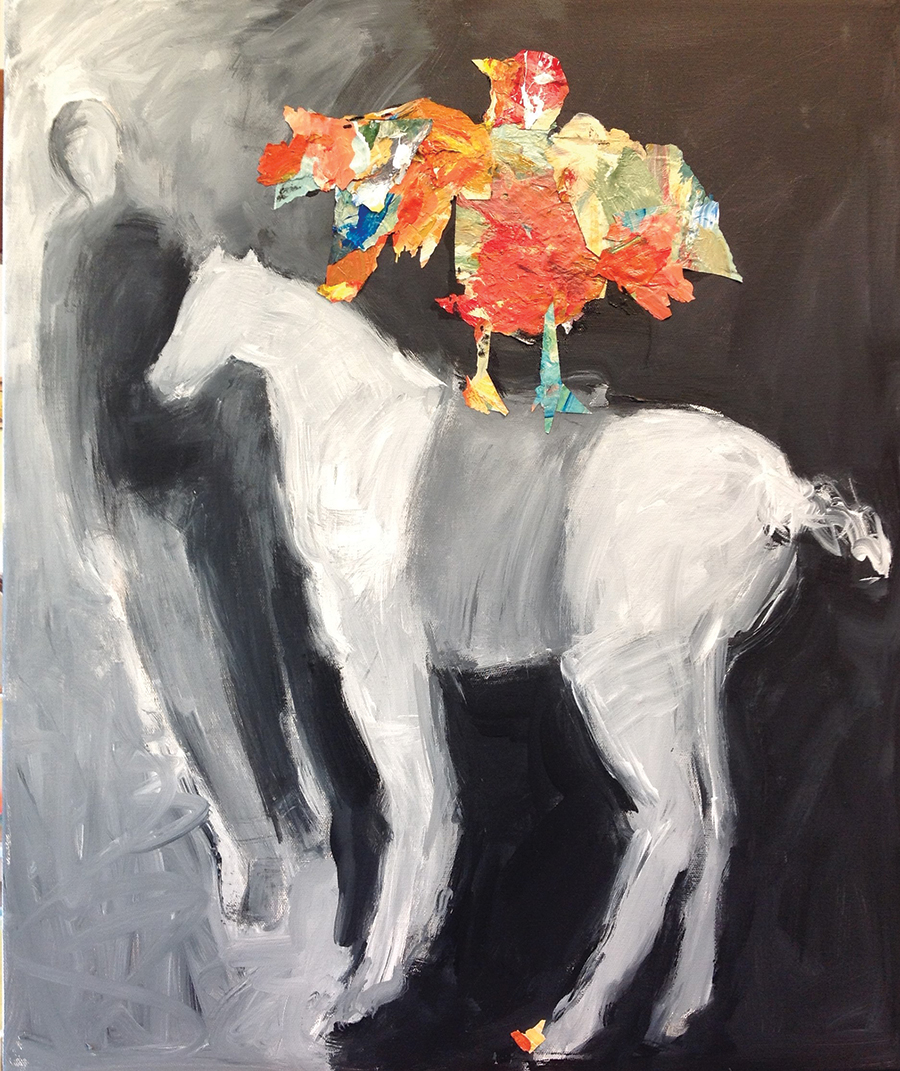
The work is one of several in Gary’s office, which also contains the painting that garnered Agnes the scholarship and a splashy still life of colorful flowers. “To some extent, I call myself a colorist. Partly because of the textiles I designed, and because I like color. But I like black and white, too,” Agnes says. In another “airport” series, figures rendered in black and white and tones of gray express the frustrations of air travel — cancelled flights, the boredom of waiting in line, checking luggage and so forth. The series came about after Agnes and Gary were stranded in the Brussels airport during a snowstorm last winter. “It was a miserable experience,” Agnes concedes. “Shoulder-to-shoulder,” Gary adds, “You couldn’t even find which line you were supposed to be in.” By the time they got to their destination, Budapest, the memories stayed with Agnes and ultimately filled her canvases.
Always painting from memory, she prefers to “give in to my intuitions and emotions. I don’t really have a preconceived idea when I start working. I just kind of start with colors and lines on canvas or paper, and so it’s very spontaneous. And then some image starts coming. And the painting goes through a metamorphosis.” Like the one of the cat on a red background in her studio. Or the small pen-and-ink doodles or “diaries” that she does every day. Or perhaps she’ll infuse a painting with memories, such as the series of chairs, tables and other pieces of furniture, inspired by the antiques business that she and Gary owned for about 10 years.
On a whim in 2006 the Brames, both antiques buffs, bought Jules Antiques & Fine Art in the old Curran Bank Building on South Elm (now occupied by the consignment boutique, Vintage to Vogue), where Agnes had an office on the second floor. By then, she had also gotten into interior design under the aptly chosen handle, Metamorphosis. “We had famous First Fridays,” Agnes says of the antique store’s wine-fueled openings. “Hundreds of people came through. It was a very nice store.” The two especially loved getting to know the clientele and learning the backstories and provenance of their inventory. “I thought of layering the people and the objects. Some of the stories people brought in with their things — it gives me chills,” Agnes reflects.
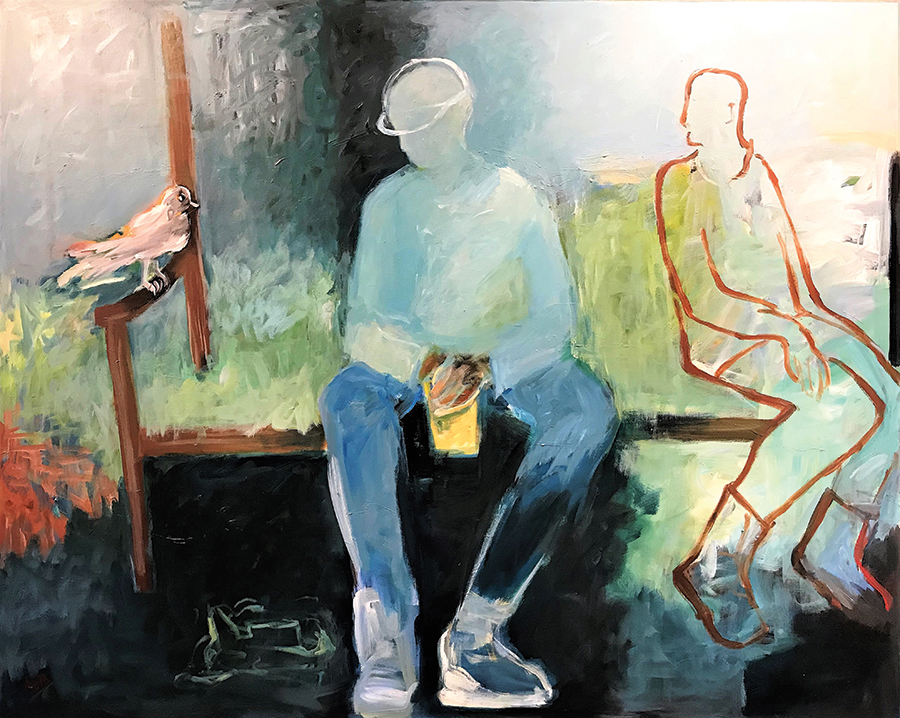
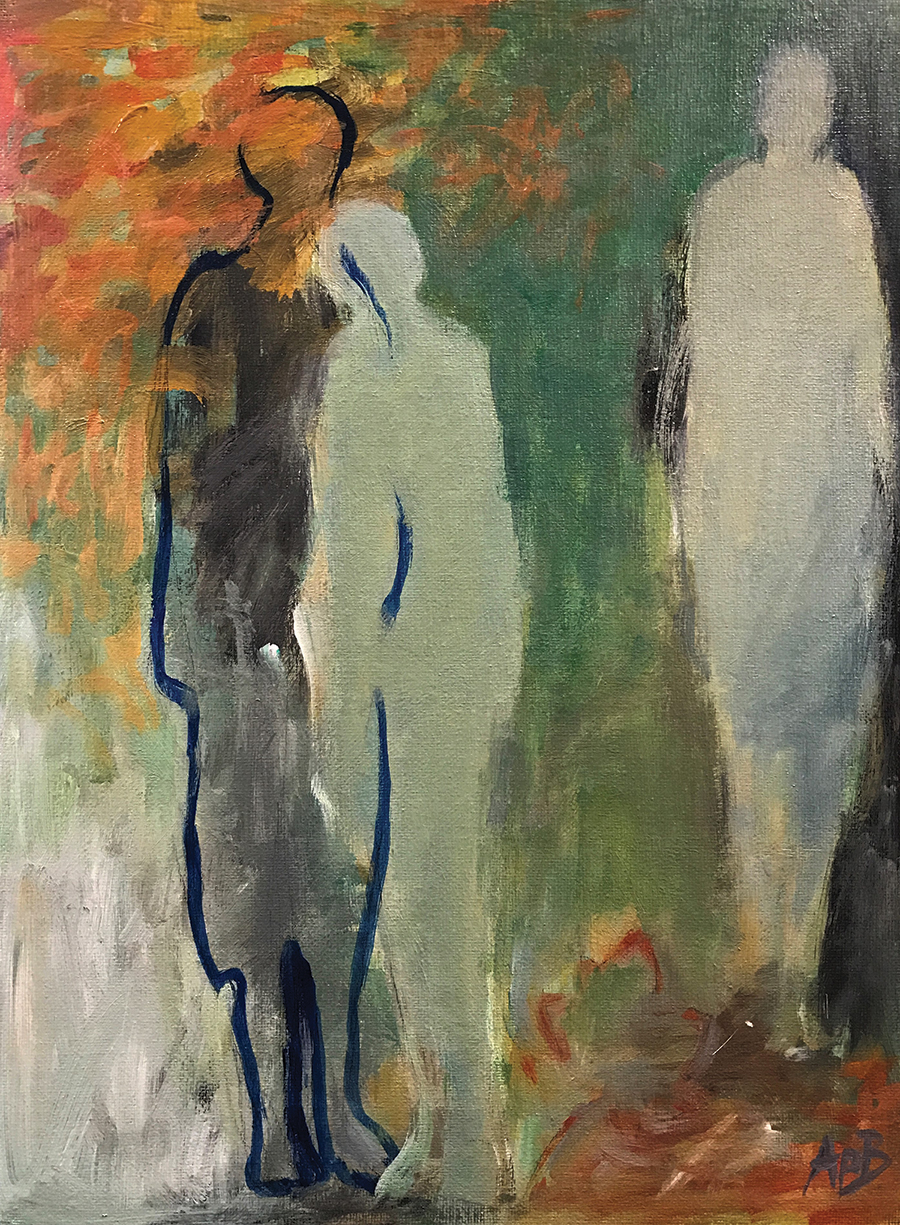
And it’s impossible not to feel a frisson, looking at the large rectangular painting, Chippendale, featuring the outlines of a chair in the foreground, while muted figures hover in the background. Are they admiring the chair? Will it remain empty and unsold? There is an air of melancholy to the painting. All the more so, when one considers how the Great Recession, not to mention grueling hours for Gary, prompted the Brames to shutter Jules Antiques a couple of years ago.
In contrast, a lively profusion of musical notes and instruments fairly blasts from another nearby canvas in Agnes’ tidy studio, a playbill that she designed for the Greensboro Symphony. “Over the years I did a lot of musical themes,” she explains. Birds also appear frequently in her work, though the artist is at a loss to explain why. She is more prolific than ever, with her design business moving at a slower pace since the Recession, and a few solo shows under her belt and another at Ambleside Gallery this month. Meantime, Agnes and Gary “are on the road again,” seeking out galleries for representation.
One, the Present Thyme in Roanoke, Virginia, has accepted seven paintings, much to the artist’s relief. “I love to paint big,” she says, laughing about the freed-up space in her garage. No doubt she’ll fill it right back again, as suggested by several works in progress scattered near her worktable filled with accoutrements of her avocation — oil and acrylic paint, brushes, frames (made by Gary, who also does personal property appraisals on the side). One painting is a commission that requires her painting a car — a first. But firsts are part and parcel of the reinvention game. “I don’t even remember wanting to be anything else but an artist,” Agnes muses. “Even though I’ve changed course from time to time: I have been doing what I like and what I was trained for, you know? . . . And I didn’t have to waitress all my life!”
Nancy Oakley is the senior editor of O.Henry.
For more information about Agnes Preston-Brame and her paintings, visit paintingsbyapb.com. Ambleside Gallery: amblesidearts.com.

